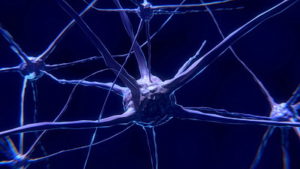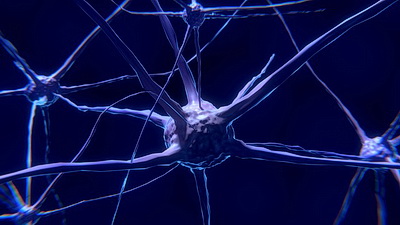Note: Article updated: 120620
Obesity has aggravated into an epidemic in the last couple of decades.
In the US, more than one-third of the adult population are suffering from this condition. Besides its social and mental repercussions, being obese makes one vulnerable to a range of diseases and medical conditions and now with the COVID pandemic, the situation worsens for those with eating disorders.
Apart from falling food quality and modified dietary choices, the majority of overweight people are lacking the necessary discipline to control their diets. It’s not due to poor metabolisms or genetics for most people, although this is a factor for some, but because they often indulge in overeating.
From the outside, it looks rather easy that one can deal with this obesity-causing habit by restricting the amount of food intake. But it is actually easier said than done. Altering overeating behavior can be quite challenging and not an easy task at all.
In this two-part article series, we will share with you a list of some simple steps* that can be taken to get rid of this seemingly harmless but eventually detrimental habit.
Stop Stashing Your Favorite Snacks
We love snacks and go overboard with our consumption if they are readily available. People love to stash their favorite snacks for untimely cravings. Having multiple bowls of your ice cream in the fridge and loads of cookies and chips in the pantry is surely a convenient way to deal with late-night food cravings. It simply becomes quite difficult to keep your hands off when you are devouring your favorite dietary item. Cutting down on these high sugary items is an essential first step towards a healthier lifestyle.
Put together a plan where you can gradually weed yourself off of them. In the beginning, it will definitely irritate you when you can’t get these snacks while badly craving for them. But eventually, you should get used to it.
Try to Maintain the Feeling of Satiation
Apart from our taste buds, overeating is strongly connected with the psychological and physiological feeling of satiation. It entails the state when we nutritionally feel satisfied and full. A satiated person is less likely to overeat. To develop this feeling within your body, there are some recommended foods you can choose from. Here is a list of some of the most satiating ones:

- Boiled Potatoes
- Eggs
- Oatmeal
- Fish
- Greek Yogurt
- Vegetables
- Quinoa
- Cottage Cheese
Don’t Skip Regular Meals
Some diet plans, such as intermittent fasting, calls for dropping the number of regular meals. Skipping a meal every day can have beneficial implications for weight management for some people but largely, it’s the precursor of overeating. Research studies also advocate for keeping the routine of regular meals for a better dietary regimen.
One research shows that eating prescribed portions throughout the day has an overall good effect on our health. It also decreases cumulative food intake. In contrast, skipping a meal increases the chances of overeating in the subsequent meal.
Add More Fiber-Rich Items to Your Diet

Fiber-rich foods are good for gut health. Moreover, they have a good value of satiation that helps in protecting oneself from overeating.
Whole wheat, vegetables, fruits, beans and oats are low-calorie and fiber-rich that can help you a lot in dealing with overeating.
A study has concluded that people who eat oat-based cereals in breakfast eat less at lunch as compared to those who eat cornflakes in the morning. Ensure that vegetables make up a large portion of your meals. Also, add fruits and nuts in the place of carb-based desserts. With these small changes, you can get rid of the bad habit of overeating. Moreover, it will also help you to fight obesity through other means like lower calorie count and increased anti-oxidant intake.
Be Aware of the Choices of Your Dining Partners
Whether it’s friends or family, the people with whom you choose to eat with also affect what and how much you consume. You tend to overeat with those who overeat. Similarly, you are more likely to order unhealthy options if other people at the table are doing it.
In short, the habits of your dining companions can impact your own dieting routine. So, make sure the entire family is on the same page when they come to the dining table. Moreover, try to eat out with friends who have the same attitude as you when it comes to the perils of overeating.
Become a Sloth While Eating
Sloth is one of the deadly sins, but so is gluttony. However, it’s not a transgression to deliberately slow down while eating. Take your time to thoroughly chew each and every bite of your meal. It has been studied that quick eating also leads to overeating. In contrast, people who eat at a slow pace tend to eat less and develop a feeling of satiation more quickly.
Overeating and Binge Eating Disorder

Binge Eating Disorder is a severe but treatable eating ailment where the affected person starts devouring exceptionally large quantities of food with an involuntary urge and subsequently, they start feeling guilty and distressed.
It is important to mention that Binge Eating Disorder is not an episode of overeating. So, it is strongly recommended to get professional help if you are affected by this disorder.
Bottom line – Diligence and common sense is a good start to losing weight. Of course, there are people who cannot lose by just watching what they eat, such as Binge Eating Disorder and there are others who may require a medical resolution such as laparoscopy and bariatric surgery, but if you are overweight and have not pursued a healthier alternative yet, why not start here? You never know what your mind and body can do!
* Note: You should always confer with a health professional prior to beginning any weight loss program!


 Photo
Photo


 The relationship between medical cannabis and psychosis is a heated issue. Despite the fact that many research studies have been conducted on how cannabis affects the human brain and if the drug can be used to treat or manage certain mental health issues, scientists have been unable to reach a definitive conclusion. This is mainly because the research studies have provided mixed results.
The relationship between medical cannabis and psychosis is a heated issue. Despite the fact that many research studies have been conducted on how cannabis affects the human brain and if the drug can be used to treat or manage certain mental health issues, scientists have been unable to reach a definitive conclusion. This is mainly because the research studies have provided mixed results.














